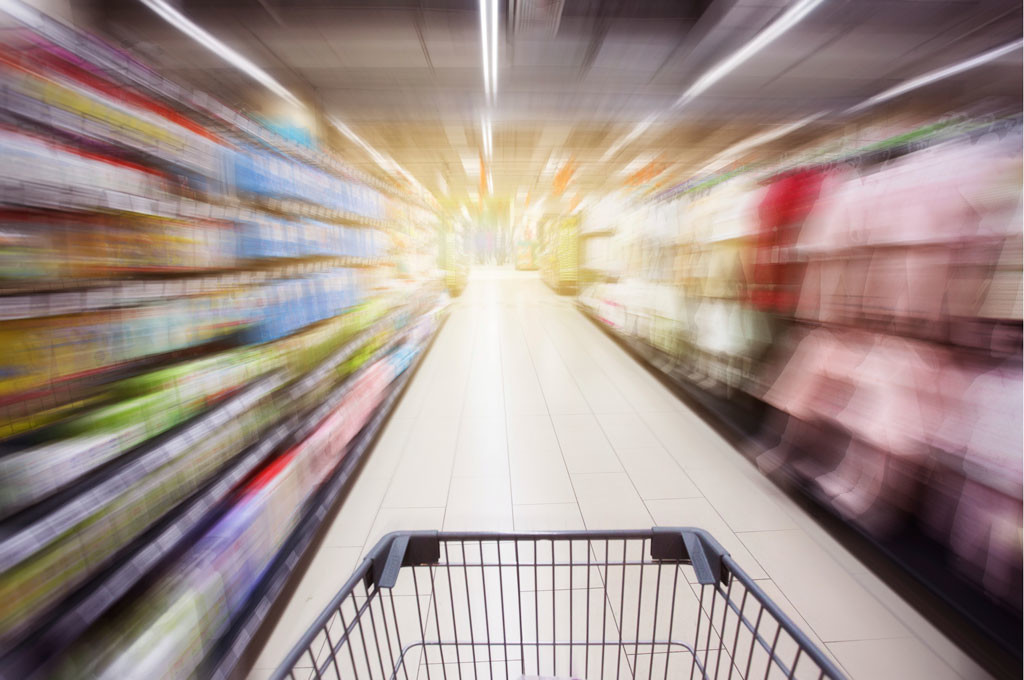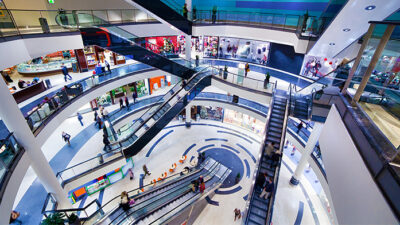If the state of the parking lots near me at pretty much every mall this December are any indication, physical retail isn’t in grave peril. There are actual people, driving their cars to actual stores, and walking down the actual aisles, buying stuff. As a matter of fact, the International Council of Shopping Centers predicts that demand for quality retail space will outstrip supply in 2016, and recent studies show that 38% of Americans visit a shopping center once a week. 1 in 5 Americans go 10 times a week. No drones, no virtual carts, and no shipping services are involved.
Or are they? Increasingly, retailers are filling gaps in their inventory with the “endless aisle” — the ability for consumers to immediately purchase from the merchant’s full product catalog in-store, regardless of what is in stock within that store.
Also: More cheer online than in stores | Black Friday backlash and the ascent of Cyber Monday
The biggest nightmare for a merchant is to spend millions on marketing, merchandising, sales training, and so on, and then be unable to fulfill a shopper’s order when they come into the merchant’s store. Say you round up the kids, grab your keys, schlep out to the mall— and you arrive to find your retail destination is out of stock of the item for which you’re searching. What a drag, right? Wrong! The endless aisle has you covered. Smart retailers today recognize the fluid nature of the purchase cycle and will help you finish the purchase anyway.
Plus: What property markets can expect after the Fed rate hike | Forget the man in the moon. What about the man in the office?
Many retailers offer free Wi-Fi in their stores. When your item is out of stock in-store, what’s to stop you from going to Amazon on your smartphone right there and ordering what you want, to be delivered to your door in two short days? Retailers that embrace the endless aisle and have smartphone apps or kiosks to deal with out-of-stock issues or add-on purchases allow customers to go ahead and complete the intended transaction with a minimum of fuss. They also can capitalize on incremental and impulse purchases made due to clever in-store merchandising and specials.
The endless aisle concept is especially relevant for categories such as clothing (with each product coming in multiple sizes or colors), or for specialty city center stores (e.g., outdoor equipment) that provide a “long tail” of products within a small retail area. The key challenge is how to ensure that an out-of-stock (OOS) issue does not turn into a lost sale.
A recent study conducted by the Grocery Manufacturers of America found that the average OOS rate in a grocery category was 7.9%, which costs retailers 4% in category sales. When the item they came for is OOS in one store, 31% of consumers buy the same item – but at another store. Even worse for the retailers, nearly 10% skip buying the item, period.
Here’s a case study: Dutch department store de Bijenkorf has deployed a successful endless aisle strategy in the Netherlands by employing in-store kiosks to facilitate online orders while shopping in-store. You say: why order online if you’re in-store already? Well, instead of having a suggestion that “additional sizes and colors are available online” in dressing rooms, etc., consumers can access – and purchase – the complete range of products offered. The kiosks have helped achieve the following:
- Streamlined customer experience. Consumers with a de Bijenkorf client account (about ½ of customers) can log in with only an email address, pay with one click if their payment credentials are stored online, and get help from sales assistants. The de Bijenkorf employee essentially “authenticates” the consumer, avoiding the use of any login passwords. In fact, it could be argued that this merchant does not provide a one-click but a zero-click functionality, g., a completely frictionless payment experience.
- Easy in-store payment procedures. If a customer hasn’t saved payment information online and wants to use a credit/debit card, a mobile POS terminal is simply used to complete chip & PIN transactions. This is a real case of “blurring the lines” with a digital order combined with a chip & card transactions.
- At-home convenience. Consumers can request next-day delivery at their home address or pickup at a network of locations for the “online” items they just ordered.
In the de Bijenkorf case, two key results stand out:
- OOS items comprise 90% of in-store kiosk transactions; the remaining 10% correspond to bulky items, where at-home delivery is more convenient.
- While the kiosks are fairly new, it seems they have generated significant incremental sales at de Bijenkorf – and other smaller, more specialized merchants report 10 – 14% increases with similar systems.
It’s a little-discussed fact (at least lately) that the majority of purchases still take place in physical stores. This doesn’t mean that retailers can rest on their laurels and ignore digital paths to purchase in their approach. The “webrooming” trend of researching/shopping online and then purchasing in the store is growing, especially as time grows short before the Christmas holiday to order online. As consumers narrow down their choices from online research, they visit fewer stores – potentially buying more at the ones they do visit. By incorporating the endless aisle into their brick-and-mortar spaces, retailers can keep more sales from slipping between their fingers.
Alex is a retail specialist working out of the Colliers office in Cincinnati, Ohio. She is a polymath, retired rollergirl and lover of interior design.

 Colliers Insights Team
Colliers Insights Team

 Anjee Solanki
Anjee Solanki

 Aaron Jodka
Aaron Jodka